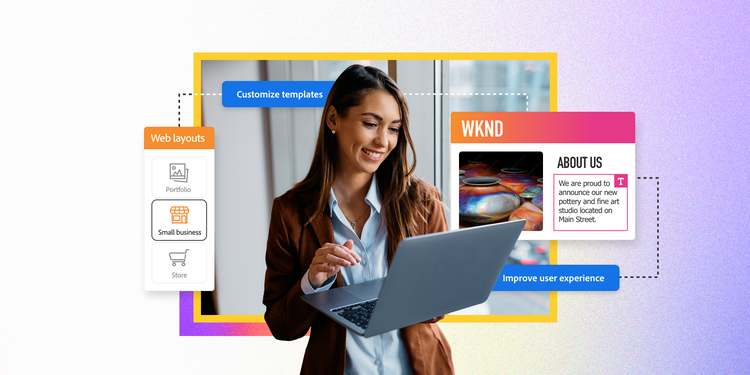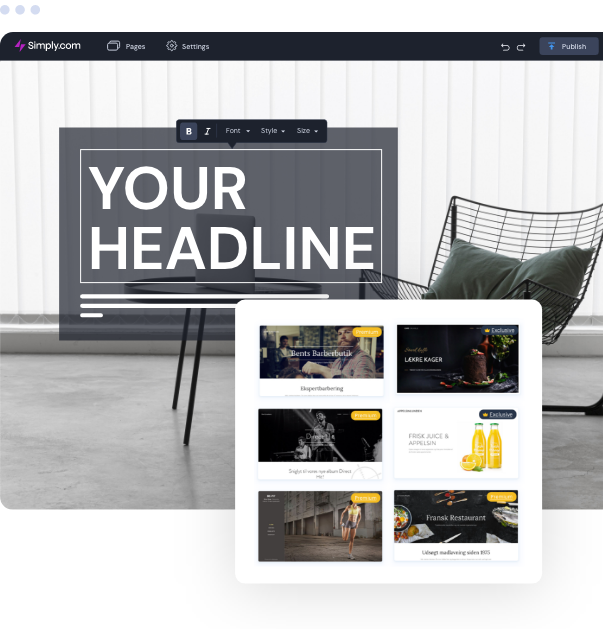Essential Components of Efficient Site Design: A Comprehensive Overview
In the world of digital visibility, efficient site layout is essential to accomplishing both user satisfaction and organization goals. By concentrating on crucial aspects such as user-centric design concepts, responsive designs, and seamless navigating, designers can develop an appealing experience that fulfills the diverse demands of visitors. Furthermore, the duty of visual pecking order and top quality web content can not be undervalued, as they significantly affect user communications and assumptions. What strategies can be applied to ensure these aspects function cohesively? The answer lies in recognizing the nuanced interplay between them, which requires additional exploration.
User-Centric Layout Principles
User-centric design principles form the cornerstone of efficient internet site layout, prioritizing the needs and experiences of the end user. These principles are rooted in understanding user behavior, preferences, and challenges, guaranteeing that the site serves its designated audience efficiently.
At the heart of user-centric design is compassion. Developers have to take part in thorough customer study, utilizing techniques such as surveys, interviews, and usability screening to collect understandings into user expectations. website design in singapore. This details educates layout decisions, resulting in user-friendly navigation, clear details style, and involving visuals
One more key facet is access. A web site must be usable for people with differing capabilities, adhering to established criteria and standards. This commitment not just improves user experience yet likewise broadens the potential target market.
By continually evaluating and improving the website based on individual feedback, designers can adjust to advancing requirements, making certain the site stays pertinent and effective. In summary, user-centric style concepts foster a deep understanding of the end individual, leading to an extra interesting, accessible, and eventually effective website.
Significance of Responsive Format
A receptive layout is important in today's electronic landscape, where a substantial portion of web traffic comes from mobile gadgets. As customers accessibility websites on a variety of screen sizes, from mobile phones to tablets and bigger displays, guaranteeing that a website adapts perfectly to these various measurements is vital for preserving use and involvement.

Furthermore, a responsive design reduces the demand for numerous variations of a website, streamlining maintenance and minimizing advancement expenses. Instead of creating separate desktop computer and mobile websites, a solitary receptive style can accommodate all users, streamlining updates and content monitoring.
Inevitably, the relevance of a receptive design can not be overstated; it is a fundamental part of reliable web site style that guarantees ease of access, enhances customer contentment, and supports overall business objectives in a progressively mobile-driven world.
Visual Hierarchy and Visual Appeals
3 crucial elements-- visual power structure, looks, and performance-- play a pivotal duty in efficient website layout. Visual power structure refers to the arrangement and discussion of elements on a website to guide customers' attention and focus on information. By using size, shade, contrast, and spacing purposefully, designers can make certain that the most crucial content attracts attention, resulting in boosted individual involvement and comprehension.
Appearances, on the other hand, incorporates the overall aesthetic allure of the site. A natural color combination, unified typography, and well-chosen imagery add to a pleasing design that resonates with the target market. A visually attractive website cultivates trust fund and integrity, encouraging individuals to check out better.
Furthermore, aesthetic power structure and visual appeals need to function in tandem with functionality to produce an efficient customer experience. While a website may be wonderfully created, it has to also offer its desired objective efficiently. Balancing these elements makes sure that individuals can browse the website with ease while enjoying an engaging visual experience. Eventually, the interplay between visual pecking order and looks is crucial for recording focus, sharing messages effectively, and enhancing customer satisfaction in the electronic landscape.
Smooth Navigation Strategies
An effective internet site style not only captivates customers aesthetically but also promotes smooth navigation, which is essential for keeping individual interaction. A well-structured navigation system enables customers to discover details swiftly and efficiently, enhancing their overall experience.
To attain smooth navigation, focus on a clear and intuitive food selection design. Utilize detailed labels for food selection items, ensuring that individuals can easily recognize the content they will certainly come across. Think about implementing a breadcrumb path. This attribute allows customers to track their place within the internet site, allowing them to navigate back to previous areas easily.
In addition, employ a search function that is plainly positioned and easy to use, providing customers the ability to locate certain content without considerable browsing. web design singapore It is also vital to keep consistency across all pages; similar navigating aspects must show up throughout the website to stay clear of confusion.
Lastly, guarantee that your navigating is receptive, adjusting flawlessly to numerous tools and display dimensions. A mobile-friendly layout is increasingly important as more users gain access to sites on mobile phones and tablet computers. By incorporating these methods, you can develop a straightforward navigating experience that urges expedition and minimizes bounce prices.
Enhancing Material for Interaction
Efficient material optimization is vital for catching and maintaining user engagement on a website. Top notch content should reverberate with the target market while being structured in a manner that improves readability. Utilizing headers, bullet factors, and succinct paragraphs enables users to quickly check the material, assisting in a better understanding of the material.
Integrating relevant key phrases naturally into the message not only boosts online search engine presence however additionally enhances customer experience. Engaging multimedia aspects, such as images, videos, and infographics, can damage up textual monotony and give visual context, making the material more attractive.
An additional crucial facet is the call to action (CTA), which ought to be clear and engaging, guiding individuals in the direction of wanted interactions. Using A/B screening can help in figuring out which material formats or messaging styles resonate most with the target market.

Final Thought
To conclude, reliable site style is basically rooted in user-centric principles, receptive layouts, aesthetic hierarchy, smooth navigating, and appealing web content optimization. These vital components operate in tandem to improve user experience and foster significant communications. By prioritizing these elements, internet sites can achieve higher access and complete satisfaction, inevitably leading to enhanced involvement and retention rates. A detailed understanding and execution of these principles are important for developing an effective online presence in a progressively electronic landscape.